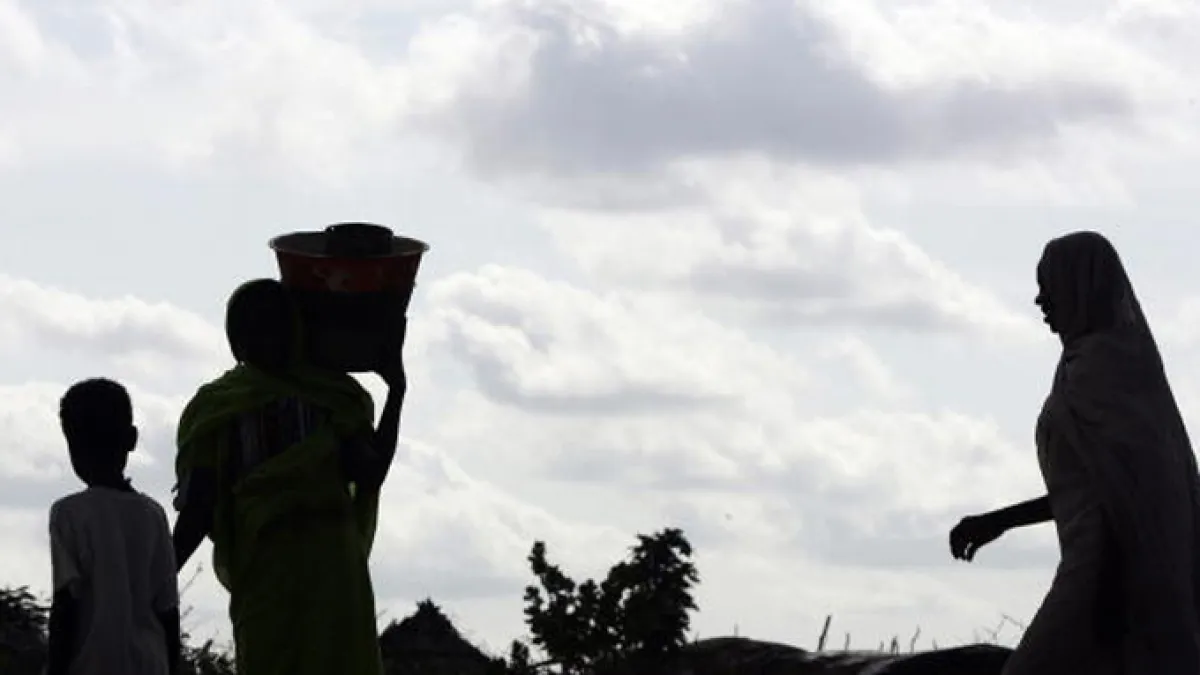RSF says Sudan’s army launches air strikes on paramilitary stronghold Nyala | Sudan war News
Drone attacks hit fuel market in city that serves as headquarters for RSF’s alternative government.
Sudan’s Rapid Support Forces (RSF) paramilitary group says the country’s army struck a fuel market in the city of Nyala, the RSF’s administrative capital, as part of an intensified aerial campaign against its positions in South Darfur.
For three consecutive days ending Thursday, military drones and warplanes pounded strategic RSF sites across Nyala, including the international airport, military positions and training facilities.
Recommended Stories
list of 2 itemsend of list
The strike on the fuel market triggered a huge blaze as barrels of fuel exploded, according to footage circulated on social media, sending thick plumes of black smoke into the air.
Youssef Idris Youssef, who heads the RSF’s civil administration in South Darfur, accused the army of deliberately targeting civilians. He described the attack as part of “a systematic policy” to punish Darfur residents for not resisting the RSF presence in their communities.
The Sudanese military has not issued any statement regarding the strikes.
Casualties were reported among both civilians and RSF members involved in the fuel trade.
In the aftermath, RSF intelligence services conducted mass arrests near the targeted site and Nyala’s main market, detaining civilians and military personnel on accusations of providing coordinates to the army, according to local sources.
Nyala holds particular strategic importance as the seat of the RSF’s parallel government, known as TASIS, which the group declared in July. Led by RSF commander Mohamed Hamdan “Hemedti” Dagalo, the alternative administration has been widely condemned as possibly fracturing Sudan, but controls significant territory across Darfur.
The city was struck by the army in October when it targeted the RSF and Nyala airport, which has been reportedly used by the RSF as a logistics hub for its forces.
Fighting continues across Darfur
Fighting has raged across Darfur since the RSF captured el-Fasher in October, an offensive marked by atrocities documented by rights groups.
The United States has said the RSF has committed genocide in Darfur.
This week, the RSF announced it had seized the Abu Qumra region in North Darfur and claimed advances towards Um Buru, though joint forces allied with the army disputed RSF assertions that they had also taken the town of Karnoi.
The attack on Nyala came just two days after Sudan’s prime minister, Kamil Idris, presented a peace proposal to the United Nations Security Council calling for RSF withdrawal from captured areas, disarmament in camps, and eventual elections.
The RSF rejected the plan, with spokesman Alaa el-Din Naqd telling Sudanese outlet Radio Dabanga it amounted to “wishful thinking”.
Sudan’s de facto leader, Abdel Fattah al-Burhan, was in Ankara for talks on Thursday with Turkish President Recep Tayyip Erdogan, at which Erdogan expressed his support for peace efforts and his opposition to dividing Sudan.
Hours earlier, a senior official in Sudan’s Transitional Sovereignty Council ruled out any negotiations, declaring there could be “no truce and no negotiation with an occupier”.
The war, which erupted in April 2023, has killed more than 100,000 people and displaced nearly 14 million, in what the UN describes as one of the world’s worst humanitarian crises.
Since the RSF seized el-Fasher – the last major army stronghold in Darfur – the conflict has shifted to Central Kordofan, splitting Sudan between territories controlled by the military and the RSF.
